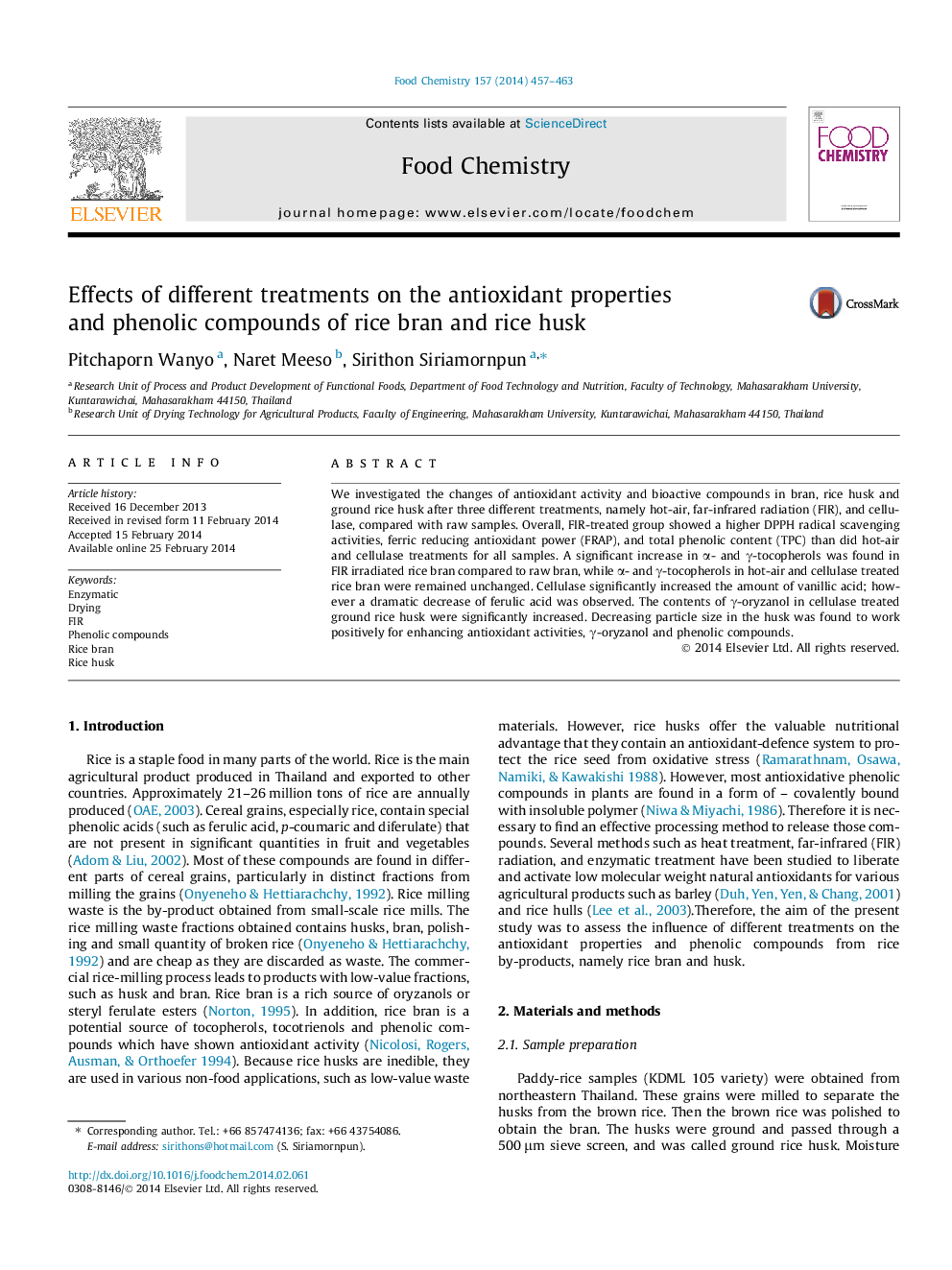| Article ID | Journal | Published Year | Pages | File Type |
|---|---|---|---|---|
| 1184597 | Food Chemistry | 2014 | 7 Pages |
•FIR irradiation gave greatest phenolic contents and antioxidant activities.•γ-Oryzanol content in cellulase treated ground rice husk was increased.•δ-Tocopherols were detected only in FIR irradiated rice bran.•Cellulase increased vanillic acid but decreased ferulic acid.•Decreasing particle size in the husk enhanced γ-oryzanol content.
We investigated the changes of antioxidant activity and bioactive compounds in bran, rice husk and ground rice husk after three different treatments, namely hot-air, far-infrared radiation (FIR), and cellulase, compared with raw samples. Overall, FIR-treated group showed a higher DPPH radical scavenging activities, ferric reducing antioxidant power (FRAP), and total phenolic content (TPC) than did hot-air and cellulase treatments for all samples. A significant increase in α- and γ-tocopherols was found in FIR irradiated rice bran compared to raw bran, while α- and γ-tocopherols in hot-air and cellulase treated rice bran were remained unchanged. Cellulase significantly increased the amount of vanillic acid; however a dramatic decrease of ferulic acid was observed. The contents of γ-oryzanol in cellulase treated ground rice husk were significantly increased. Decreasing particle size in the husk was found to work positively for enhancing antioxidant activities, γ-oryzanol and phenolic compounds.
